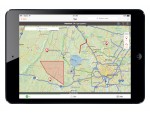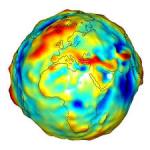
Tuesday, September 29th, 2015
Everywhere they turn these days, manufacturers of all-in-one GPS devices run into bad news. Early in August 2015, Trimble stock reached $19.01 per share, down 44.8 percent from a year earlier. Sales of Garmin personal navigation and auto devices fell 11 percent in the fourth quarter of 2014, a decline consistent with those of recent

Wednesday, July 9th, 2014
Many reports in the Chinese media have indicated that Alibaba, China’s largest e-commerce site that is on an investment spree, will team with State-owned China North Industries Group to promote the commercial uses of the Beidou navigation system. The investment has been reported at 1 billion yuan ($160 million) according to Dazhihui News Agency.

Tuesday, May 13th, 2014
International efforts to mitigate climate change hinge on limiting global anthropogenic CO2 emissions. About 12 percent of these emissions are due to deforestation and forest degradation, mostly in developing countries. To limit forest emissions, in 2008 the United Nations launched its Collaborative Program on Reducing Emissions from Deforestation and Forest Degradation in Developing Countries (UN-REDD). Building

Monday, February 24th, 2014
Unmanned aerial systems (UAS) have recently become ubiquitous in the mass media and in trade publications, due to a variety of factors that include : international controversy over their military use by the United States against targets in Pakistan; domestic concerns about potential privacy violations; the development of ever cheaper and more capable systems; congressional

Tuesday, December 3rd, 2013
“Is my property being taxed fairly?” “Are zoning variances being granted in a consistent manner?” “Is my flood insurance rate justified?” These are the types of questions concerned citizens may ask, both in their own interest, and in the interest of maintaining a responsive and equitable democracy. Our democratic system of government is supposed

Tuesday, November 26th, 2013
Currently, about a dozen government and commercial Earth-imaging satellites circle the Earth daily. They take thousands of pictures that governments, private companies, and non-governmental organizations (NGOs) use for purposes as varied as monitoring wheat production, looking for point sources of pollution, and displaying images on Google Earth.

Tuesday, November 12th, 2013
In recent years there has been acceleration in the collection and publishing of digital data about people, places, and phenomena of all kinds. Much of this big data explosion is due to the advancing diffusion of public data offered by government agencies at all levels. This increased availability of data presents great opportunities for answering

Monday, August 5th, 2013
The advent of Earth-observation satellites transformed how we view our planet—from occasional snapshots to near continuous, comprehensive, and real-time coverage. Likewise, the advent of cabled sensor networks on the sea floor is beginning to provide scientists and the public with a continuous flow of data, including video streams, that will revolutionize our understanding of

Monday, June 17th, 2013
This feature originally appeared in the inaugural issue of Apogeo Spatial magazine (formerly Imaging Notes). According to a recent United Nations report, stresses on water supplies aggravated by climate change are likely to cause more conflicts, and water should be considered as vital to national security as defense. The report points out that 145 countries

Tuesday, May 28th, 2013
In my work supporting disaster response operations, I have often heard practitioners say, “Where can we quickly get detailed and up-to-date map from?” Chris Hepp, by profession a medical doctor, faced the same issue when deployed on humanitarian and peacekeeping missions with international organizations to Albania, the Kosovo, Rwanda and Haiti. He recognized the value